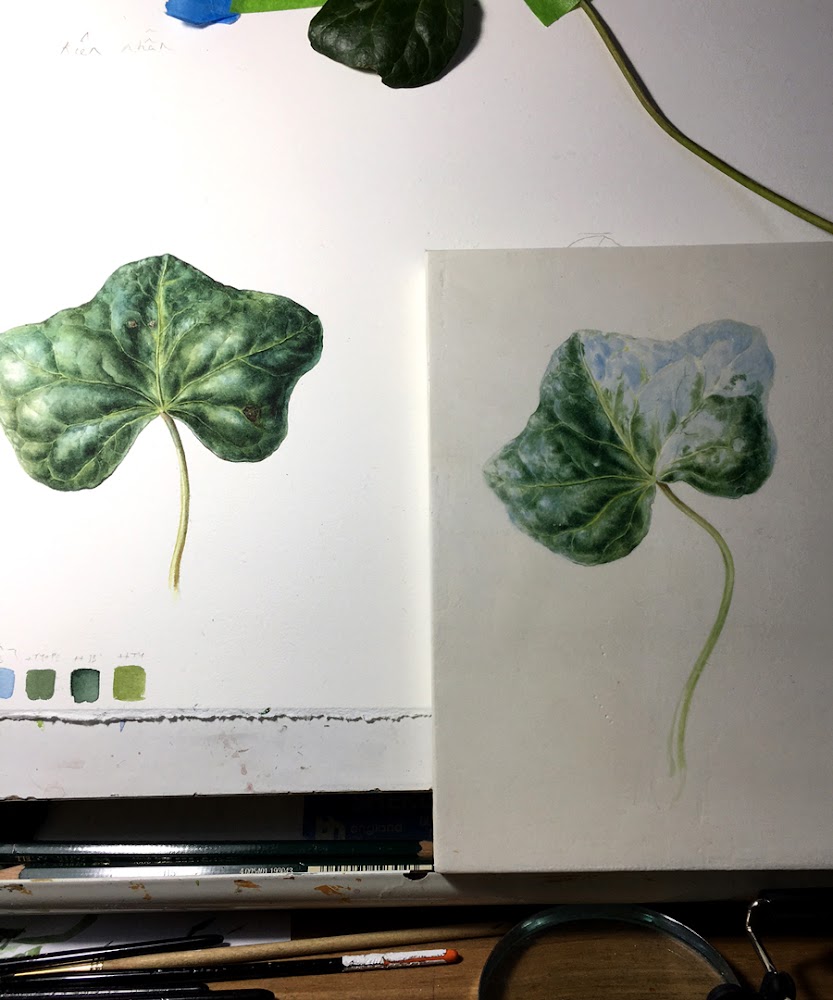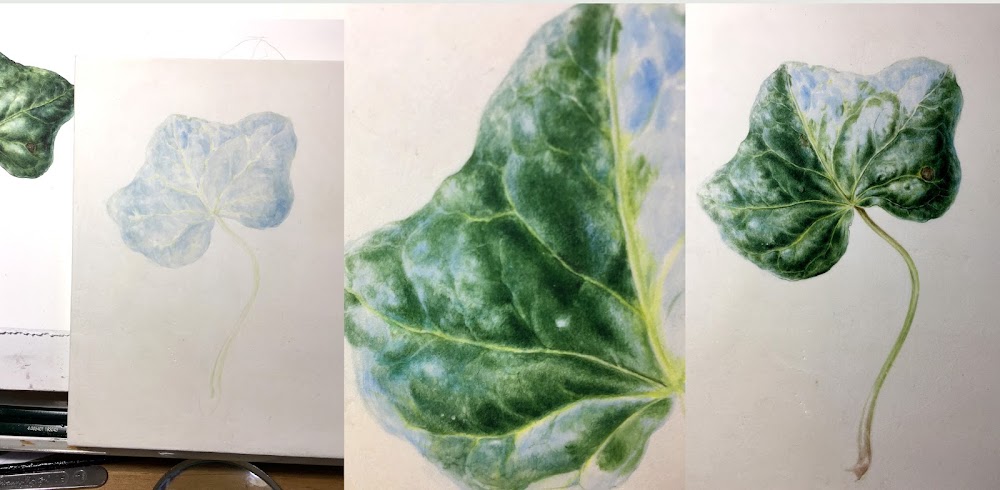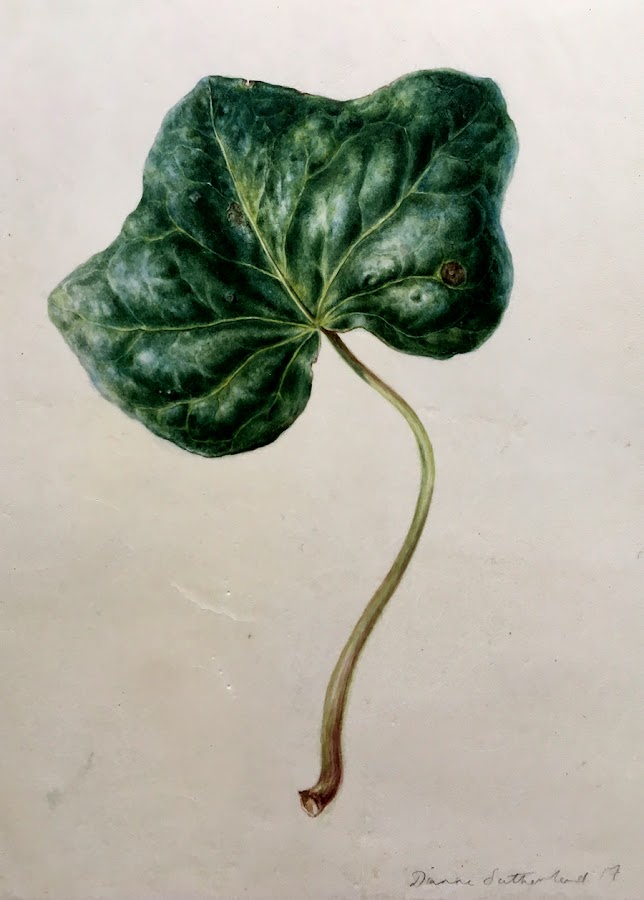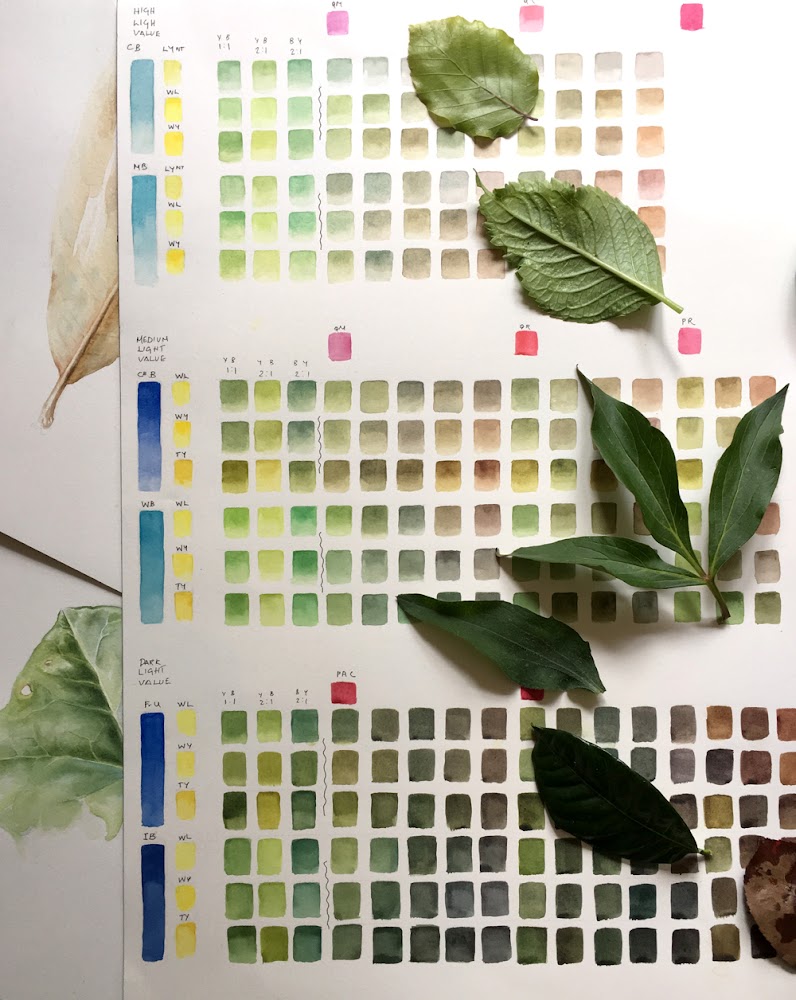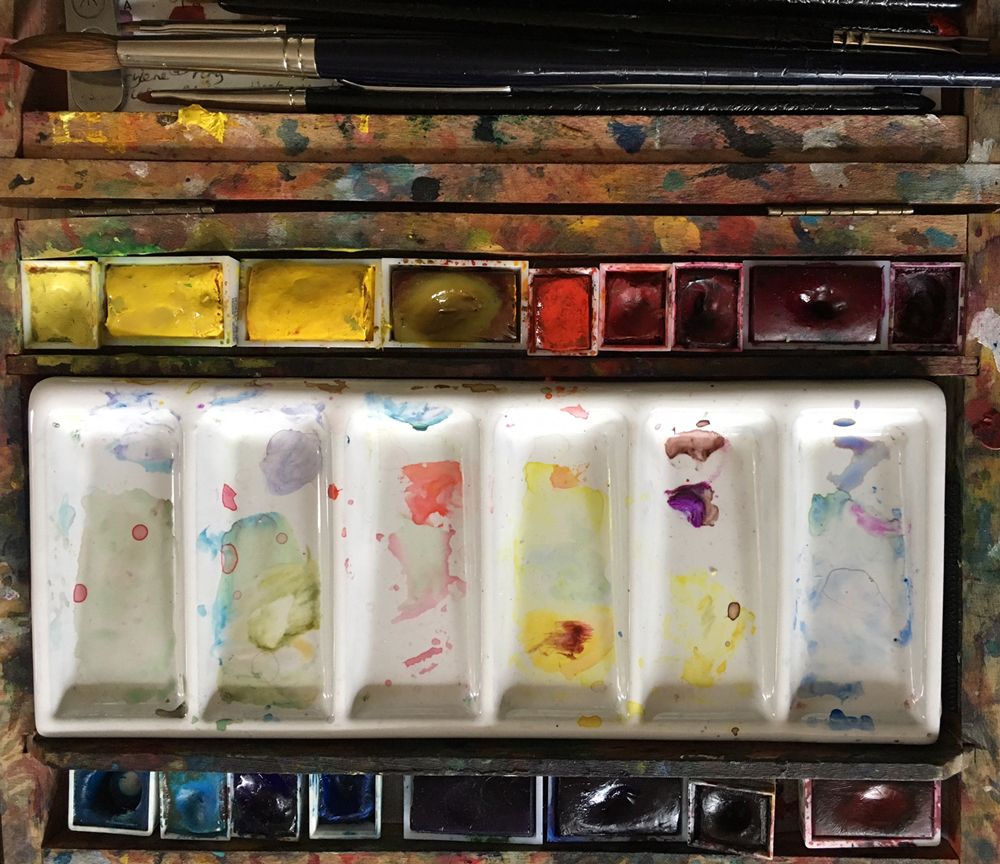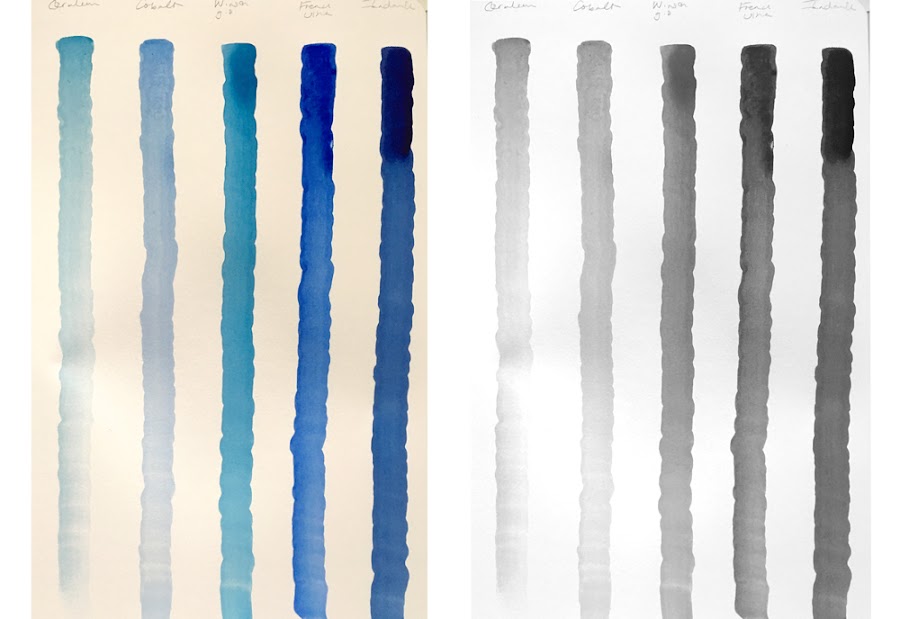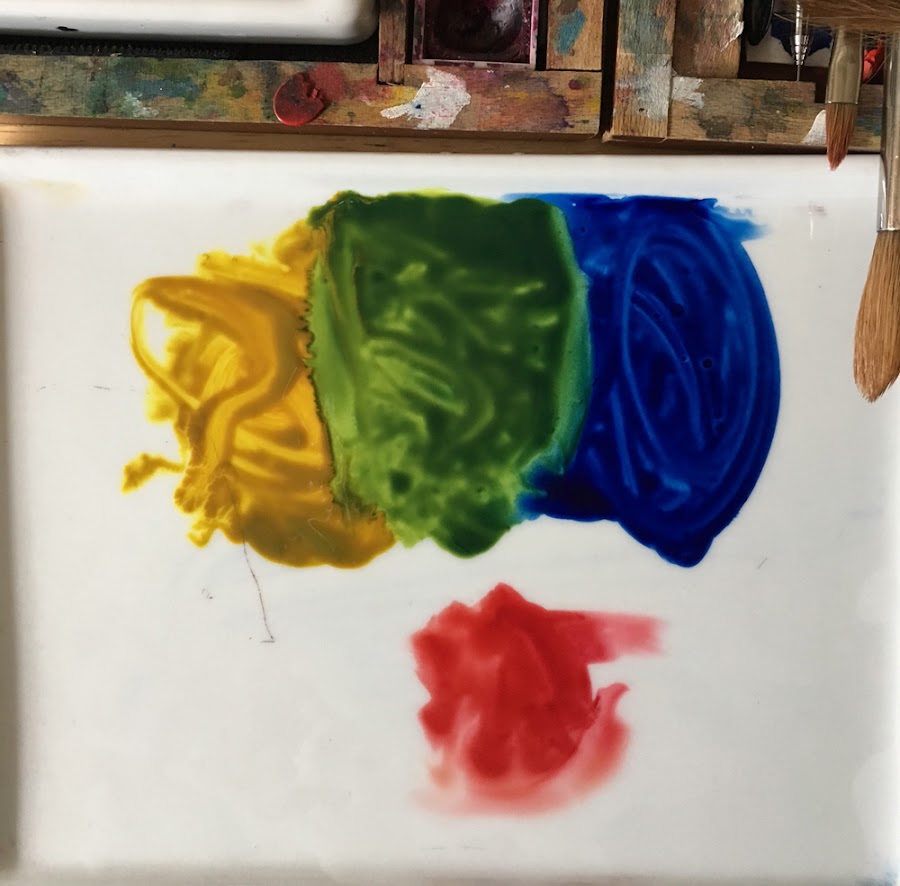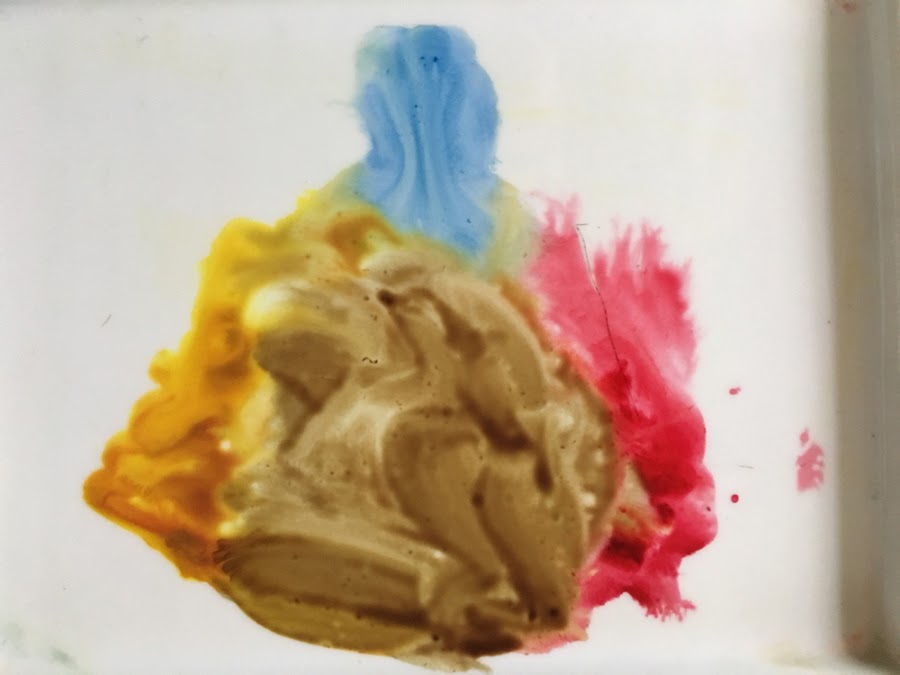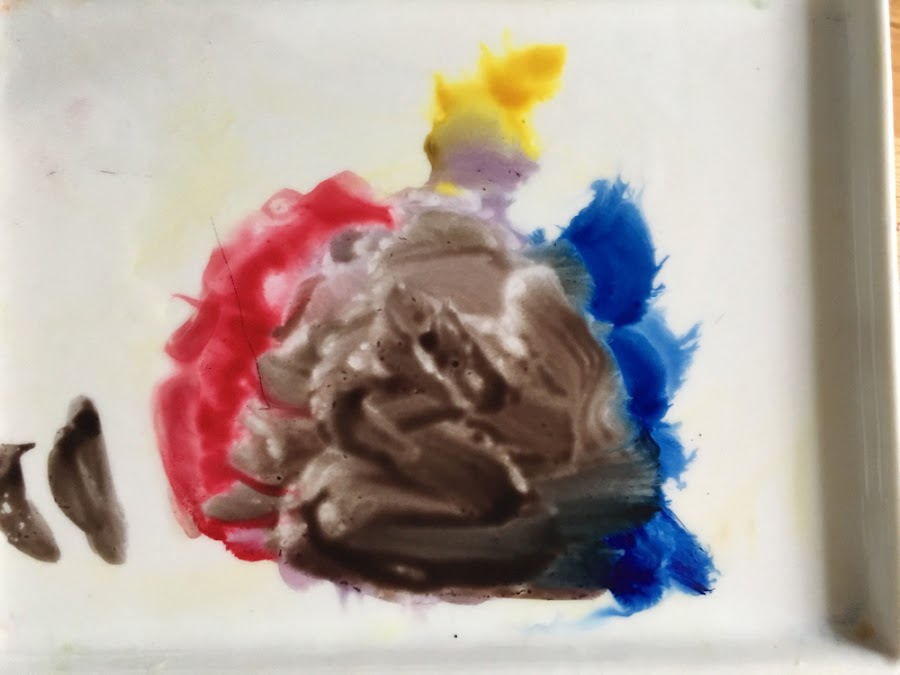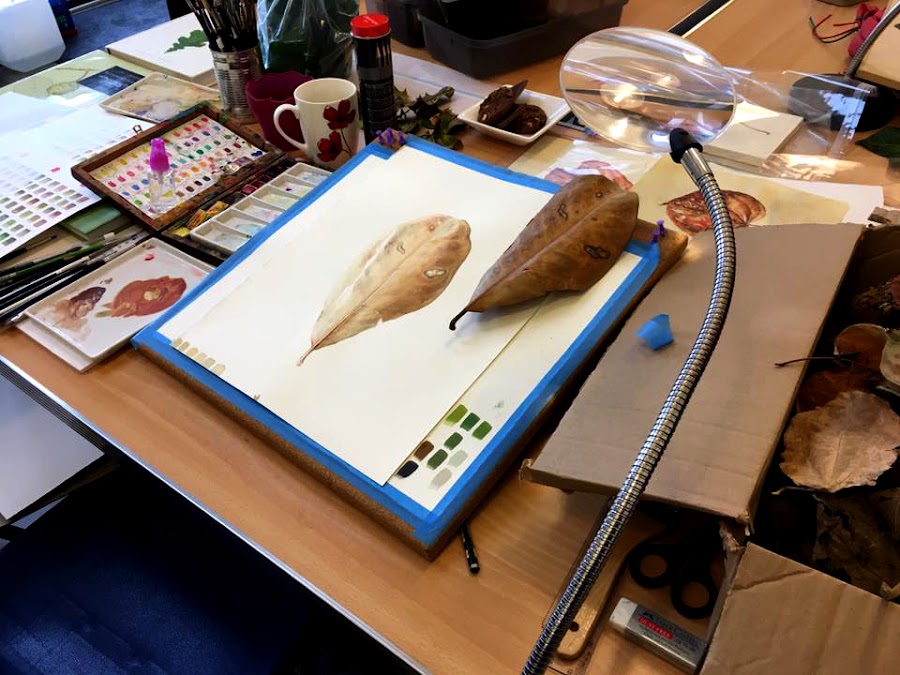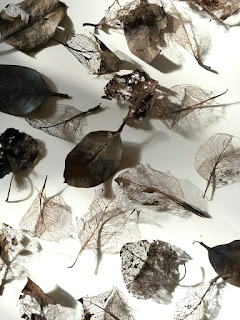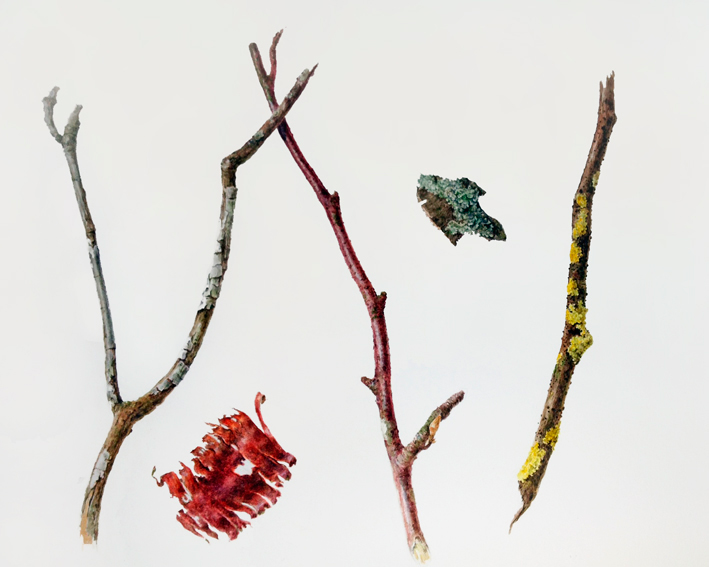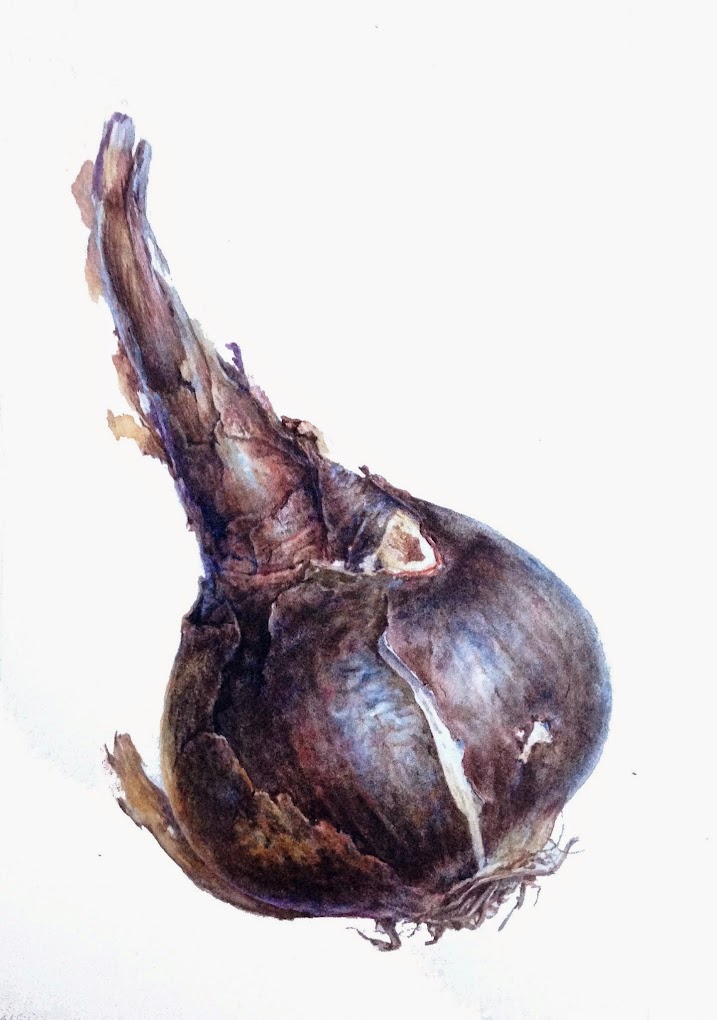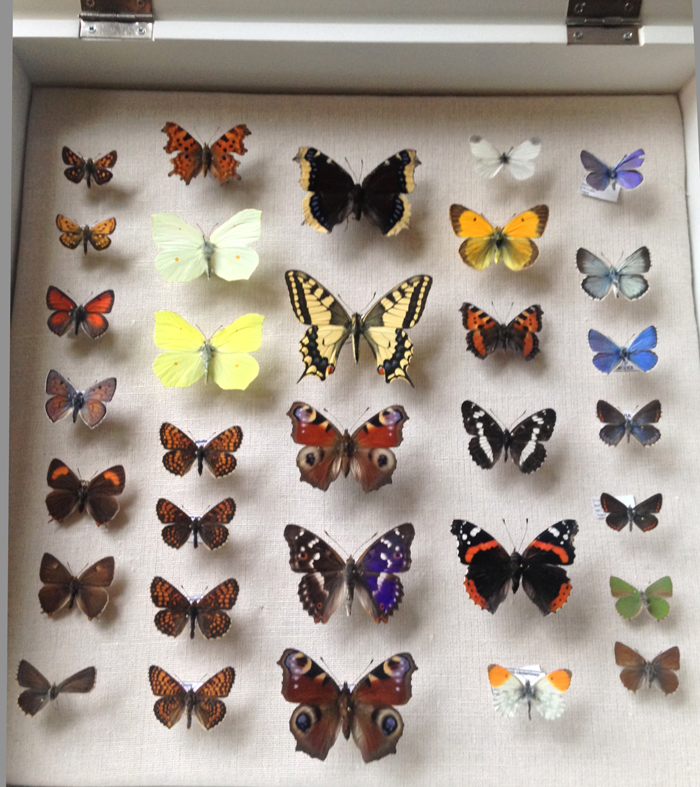 |
| Stages of the drawing, working from light to dark. First layer 4H, thereafter, 2H, HB, B, 2B and 3B |
The pencil's come in a round upright tin, which contains grades 4H - 9B. Smaller sets are available but I like to work with a full set to enable me to achieve the full range of tones found in botanical subjects. They cost around £34 from Jackson's Art for the 15 pencils, which works out a good bit more costly than Faber Castell 9000's Art set, with 12 pencils ranging from 2H to 8B and which costs around £11 from Amazon. Adding the 3 Faber Castell grades make the equivalent 15 grades, makes the total cost around £15. Pencils are also available individually ( see the links at the end of this post). The question is, at more than double the cost, are the Caran d' Ache worth it?
 |
| The tin of pencils is quite portable and the colour coding is useful |
It's worth pointing out that I used Canson Heritage HP paper for this drawing, which in hindsight was a mistake. I always use HP watercolour paper for my drawings but this wasn't great, the surface is very soft and fibres lift easily from it, even with the lightest of pressure.
I can usually tell if a pencil isn't good when I sharpen it, for example, Derwent pencils are dreadful to sharpen and they're probably my least favourite to use. The wood is hard and rips and the leads break, they're softer than other brands, so much darker grainier results occur. I'm sure Derwent are good for other types of drawing but they're not the best choice for botanical work. The Caran d' Ache sharpens well, I noticed that they are chunkier to hold than Faber Castell pencils, but that's not a bad thing. The wood is painted from light to dark grey, so are colour coded, which is useful when reaching for the pencils.
I compared a few grades of Faber Castell and Caran d'Ache directly by making small swatches because I wanted to to find out if they are harder or softer. They are actually very similar but the latter are ever so slightly softer. My initial observation is that they feel very smooth and 'buttery' on the paper, this is a good indication, and possibly to do with being softer.
The Rose Drawing
Given that the pencils are slightly softer I decided on a 4H for the initial layer of graphite. I normally start with a 2 or 3H with Faber Castell. Here's a time lapse video of some of the process.
Untitled from Dianne Sutherland on Vimeo.
A layer of 4H was added first, this is pretty much all over but varying the weight to give an indication of form. I use the continuous tone method (small ellipses or similar). They weight of the pencil on the paper has to be kept very light - it's almost like hovering lightly over the surface with the weight in the hand and not at the point where pencil meets paper. I work over and over it but maintaining the light touch, this 'works' the graphite into the surface of the paper to give a smooth soft appearance. Although the paper appears relatively smooth to the eye and feel, if you look under a magnifier, you will see the 'tooth'.
 |
| The first layer using the 4H, a soft graded covering to get feel for the shape whilst providing a light foundation |
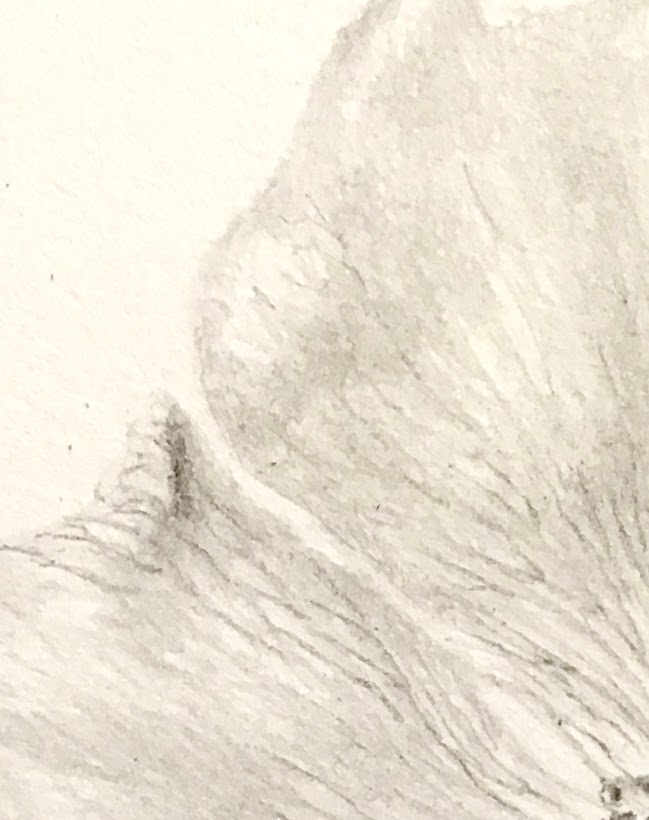 |
| I deepen the tone in selected areas using a 2H and then start to add the fine veins using a very well sharpened HB |
 |
| Adding the veins and anthers with and HB as well as drop shadow under the anthers and where the petals overlap with the same grade. |
 | |||
| Unfinished! I continue to add more form by using softer grades, HB, B, 2B and a few very small touches with a 3B but the Canson paper proved a problem. |
I have dabbled with the pencils before but not in any depth. My experience with the Caran 'd Ache pencils was a reasonably good one and I'll definitely continue to use them, as to whether they are worth paying more than double the price, I have to say that they're not that great to warrant the cost and I still like the Faber Castell 9000. I actually stopped short of finishing the drawing as the paper was frustrating me, so wont be using use this paper again for graphite. It wasn't to do with the pencils as the result was the same with both brands, in fact it was worse with Faber Castell, basically the surface is too soft for tonal graphite work but it's OK for watercolour, which, after all is its intended purpose. My preferred papers for graphite are Arche HP and Sennelier HP. I did feel that overall the pencils are softer than the Faber Castell and my drawing was becoming too dark too soon. If I was to start again, I'd delay adding the HB by doing more work with the full range of H grades before moving to the HB.
You can buy the Caran d' Ache individually for £2.30 from Pullingers
Faber Castell 9000 are just £0.80 individually from Pullingers


